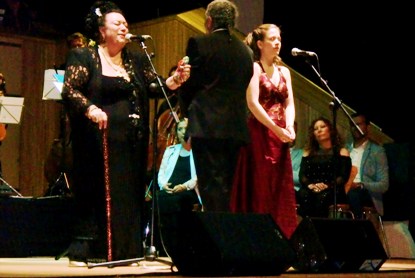From Triana to the nazi camps: the Roma long battle
 Camaron de la Isla in the soul and Paco de Lucía in the memory. Full of pride and complaint. Full of ‘joie de vivre’ that difficult times can’t extinguish. But, above all, determined to prove that they are the only masters of their fate, Spanish gipsies celebrated last April 8 their International Day with the Roma’s Culture Awards 2014 organized by Spanish Roma Culture Institute and the Spanish Ministry of Education, Culture and Sport.
Camaron de la Isla in the soul and Paco de Lucía in the memory. Full of pride and complaint. Full of ‘joie de vivre’ that difficult times can’t extinguish. But, above all, determined to prove that they are the only masters of their fate, Spanish gipsies celebrated last April 8 their International Day with the Roma’s Culture Awards 2014 organized by Spanish Roma Culture Institute and the Spanish Ministry of Education, Culture and Sport.
28.04.2014
There is a such a great story behind every prize winner... Like the awarded with the Painting and Plastic Arts prize, a French painter called Gabi Jiménez, whose works of art are his weapon against discrimination and who has pledged to destroy his brushes “when the Roma were free”. Or the Amaya brothers story, two football players who far from hiding their gipsy origins, score goals in the fields of the world with their heads held high.
Pilar Távora, awarded in Literature and Performing Arts, put in words what she shows in her films: “We should use every tool we have to knock down clichés and walls”. In the Young Talents category, David Barrull, winner of the Spanish television music contest La Voz, encouraged younger generations of gipsies to “dare to follow their dreams and prove their worth”. With a sudden emotional outburst: “¡Viva mi pueblo!” (“¡Long live my people!”, the flamenco singer Lole Montoya received and standing ovation.
However, there is a time and a moment for everything and the attendants got serious when Miguel Mora, a journalist in the Spanish newspaper El País, received his Communication Award and condemned the living conditions of Roma, “these people harassed and wiped out, used as a scapegoat by the lacklustre politicians in Europe”. Hristo Kyuchukov, a Bulgarian gipsy leading specialist in the field of Romani psycholinguistics and education of Roma children, warned against racism in the education systems of Europe.
On the other hand, Ricardo Pachón, Award for Concord, reported the negative consequences of the dismantling of the “best integration model”, in Triana, a well-known neighbourhood in Seville, whose gipsies inhabitants were forced to leave and settle down in a run-down area, el 'Barrio de las 3.000 viviendas' (3.000 homes neighbourhood), where the gipsy culture essence is being lost. Pachón, with a Degree in Law and international studies, is the producer behind records so iconic as “La leyenda del tiempo” (“The time legend”), a Flamenco masterpiece.
Nevertheless, without a doubt, the most moving story was the one of Jean Sarguerán, Uncle Pipo. This Spanish-French Roma was born in 1942, in the middle of the Second World War, in a confinement camp in France where his family was locked up charged with wandering around the country without a permit. His mother became the camp heroine always willing to help those in difficulties, whether they were gipsies or Jews. They managed to escape the camp only to find themselves wandering around Europe until the war finished. A great example of courage and fighting spirit in the most difficult times.
The audience went wild with the first chords of “I’m a gipsy” (“Yo soy gitano”), epitome of what it means being a gipsy: unselfishness and spirited defence of family ties. Camaron sang Roma like nobody else and Federico García Lorca saved a place in History for them through his books. But, above all, the Roma aims to have their own voice in Spain and in Europe, leaving stereotypes behind.